Posted by Warren Wong on Thursday, September 19, 2013,
In :
Star Astronomy
Understanding how large star clusters form could tell us more about star formation when the universe was young Tonight we’ll journey to the truly titanic 30 Doradus nebula (also called the Tarantula nebula), 170 light-years away in the Large Magellanic Cloud, aboard the Hubble Space Telescope. The Large Magellanic Cloud is a smaller satellite galaxy to the Milky Way, where astronomers recently discovered something they suspected about the formation of larger star clusters.
 The spider legs see... Continue reading ...
Magnetars as Massive as Black Holes
Posted by Warren Wong on Friday, December 30, 2011,
In :
magnetars
Can be viewed in the pulsar zoo
Space News
Thursday, December 29, 2011 – Astronomers once believed that stars with a mass over 25 times that of our own sun would eventually become black holes. Astronomers are presently reassessing this belief in light of new evidence suggesting magnetars with a mass as much as 40 times that of our sun exist amidst the pulsar zoo. Magnetars are neutron stars with magnetic fields a million billion times as powerful as the one surrounding Earth. Presently a... Continue reading ...
Astronomers View Lighthouse GRB 110328A for the First Time
Posted by Warren Wong on Sunday, July 3, 2011,
In :
black holes
 NASA scientists are eagerly awaiting more Hubble Space Telescope images of a unusual galaxy in the constellation Draco that currently has the attention of astronomers around the world. The Burst Alert Telescope on NASA's Swift satellite came to life on March 28 th as it detected distant explosions over 3.8 billion light-years away in the constellation Draco. Explosions thousands or possibly millions of times more intense than any in the history of the human journey to the beginning of space an... Continue reading ...
Lunar Reconnaissance Orbiter on Last Mission for Mankind
Posted by Warren Wong on Tuesday, April 26, 2011,
In :
the Moon

The Lunar Reconnaissance Orbiter
Mankind has studied the moon more than the bottom of the oceans of Earth and while to many this maybe in doubt, the facts speak for themselves. NASA and star gazers around the Earth have taken millions of images of the moon during the past fifty years, while we are just starting to dive into the deepest depths of Earth's oceans.

Apollo 11 landing site of the Eagle
NASA has also just released a new batch of images and measurements of the moon, wondrous new views... Continue reading ...
Blaze Your Name in the Night Sky
Posted by Warren Wong on Monday, November 22, 2010,
In :
naming stars
Celestial bodies in the night's sky are often named after their discoverers
Take a look at the night sky above you and name a few of the celestial objects you know in your head. Would you like to leave your name written in the annals of astronomy and human history? One of the greatest honours for an astronomer is to have their name adorn a celestial body in the night sky. Look up into the night sky and many of the stellar bodies you see will have been named in honour of their discoverer, a f... Continue reading ...
Galaxies Collide in Colossal Collisions
Posted by Warren Wong on Thursday, November 18, 2010,
In :
galaxies
Oldest stars in Milky Way Galaxy appear to be captured parts of other galaxies
 - The stellar halo of the Milky Way contains older stars astronomers believe were captured during a collision with another galaxy about 5 billion years in the Milky Way's past
Astronomers studying the oldest stars in the Milky Way Galaxy think that the most ancient stars in the Milky Way Galaxy could be parts of other galaxies that have been transferred or captured by the Milky Way Galaxy during gigantic coll... Continue reading ...
Cycle me This, Cycle me That
Posted by Warren Wong on Saturday, November 13, 2010,
In :
the Sun
Cycles of Life
 - Everything cycles until death
Astrophysicists studying stars use the closest star to Earth as their main test subject, Sol. Astronomers met recently during the American Astronomical Society meeting on May 26 in Miami to discuss the usefulness and reliability of three new techniques being used by current solar scientists to delve into the mysteries of the sun. "Scientists hope these three new techniques will help them predict the future behavior of Sol and jet streams, r... Continue reading ...
Star Light, Star Bright
Posted by Warren Wong on Thursday, November 11, 2010,
In :
supernovas
Supernova SN 2005E Says Hello to the Universe
 - Supernova SN 2005E shines bright on the edge of spiral galaxy NGC 1032
A supernova is one of the most spectacular and massive events astronomers journeying backward to the beginning of space and time view, and can often be billions of times as bright as Sol, or shine brighter than an entire galaxy. Take a journey to a supernova, like SN 2005E, which astronomers became aware of when it lite...
Continue reading ...
Collisions Between Objects in the Solar Sytem is Absolute
Posted by Warren Wong on Thursday, November 11, 2010,
In :
asteroids
Locating asteroids traveling through the solar system
 - Hebe 6 should be viewable in for the patient star-gazer
Locating smaller celestial objects in the night sky is harder and time-consuming, but with a little patience and perception all star-gazers, both amateur and professional, can journey to a nearby asteroid traveling through the solar system to view these smaller travelers through time and space.
How do astronomers locate small and distant celestial bodies traveling throu... Continue reading ...
A Greek Letter for Every Star
Posted by Warren Wong on Wednesday, November 10, 2010,
In :
star catalogues
Star maps and the Greek alphabet
 - Anybody understand Greek?
The names and designations of the stars and celestial bodies in the night sky above your head were first officially documented around 1603. In this year, German map maker Johannes Bayer published his "Atlas of the Constellations", in which he plotted the positions in the night sky of more than 2,000 celestial objects. Previous star charts in contrast designated stars according to their position within the mythological figure... Continue reading ...
You Think Life on Earth is Tough!
Posted by Warren Wong on Wednesday, November 10, 2010,
In :
exo-planets
 - Journey to this system to see what life would be like
Take a journey to the beginning of the universe and view exo-planets that might be more like death-planets for humans
 - You might find life to be a little harder here
Planets circling twin stars close in proximity could be a real tough place for life to begin, according to the conclusions of a study conducted using data from NASA's Spitzer Space Telescope. Space scientists using NASA's infrared observatory recently found what ...
Continue reading ...
MAVEN Looks for Clues to Mar's Missing Atmosphere
Posted by Warren Wong on Tuesday, November 9, 2010,
In :
Mars missions
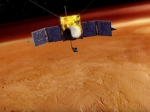 - An artists conception of MAVEN in orbit around Mars. NASA photos.
Where did Mar's thicker atmosphere go?
 - This shot shows water ice clouds at the top that indicate a storm front on the Red Planet
Space scientists looking at the atmosphere of the Red Planet have a bit of a mystery on their hands as the facts would seem to indicate that Mars should have a much more prominent atmosphere. The formation of an atmosphere thick enough for liquid water to flow on the planet's surface wo...
Continue reading ...
The Biggest Bang of Them All?
Posted by Warren Wong on Saturday, November 6, 2010,
In :
Star Astronomy
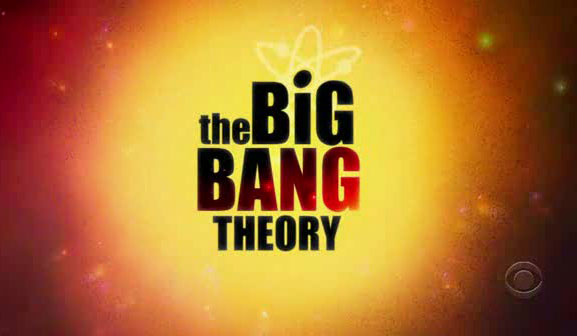 - Television and the universe will never be the same
 - Did the universe begin in the biggest bang of them all?
The "Big Bang Theory" Hits Home
Ever heard of the "Big Bang Theory", the television show starring Johnny Galecki and Jim Parsons as two nerdy physicists being taught the meaning of a big bang by the sexy and memorable Kaley Cuoco as Penny. We'll astronomers have a theory about the biggest bang of them all, they call the "Big Bang". A theory about the beginning of space and...
Continue reading ...
Dance Across the Night Sky with Cassiopeia the Queen
Posted by Warren Wong on Friday, November 5, 2010,
In :
Star Astronomy
Star gazers Halloween treats abound in autumn's night sky
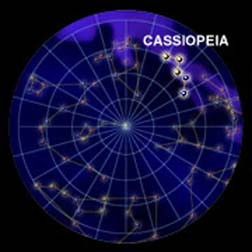 - This star map gives you an idea of the stars in and around Cassiopeia the Queen. NASA photos.
Cassiopeia the Queen is one of the first northern deep sky objects we'll view during our journey to the beginning of the universe. Cassiopeia the Queen is easily recognizable in autumn's night sky using her characteristic W or M shape form and she was one of the 48 constellations originally listed by the 2nd century Greek astronomer ...
Continue reading ...
Searching the Night Sky for a Supernova
Posted by Warren Wong on Friday, November 5, 2010,
In :
supernovas
Astronomers are looking at NGC 3982 and other galaxies for a supernova to study
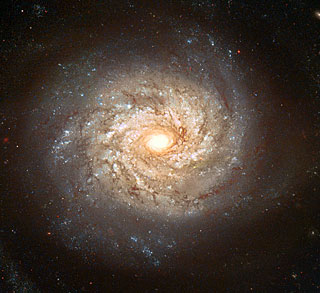 - If you see a supernova, it could be your big moment in life? NASA photos.
The Milky Way use to be thought of as a spiral galaxy, but recently collected data seems to suggest to astronomers that the Milky Way could in fact be a barred galaxy. Either way, the human journey to the beginning of the universe has revealed to astronomers a seeming infinity of galaxies beyond the celestial horizon we view from Ear...
Continue reading ...
Journey into the Heart of the Beehive
Posted by Warren Wong on Friday, November 5, 2010,
In :
Star Astronomy
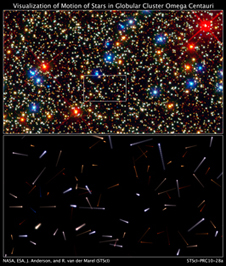 - The bottom photo reminds many of bees moving around in a hive. NASA photos
The Hubble Space Telescope takes the human journey to the beginning of the universe into the beehive
We join the human journey to the beginning of the universe as it boards the Hubble Space Telescope to travel 15,800 light years (~ 4850 parsecs) into Centaurus the Centaur to globular cluster Omega Centauri to peer into the beehive and look at individual stars.The beehive as it's called was first noted by earl...
Continue reading ...
The First Possible Cradle for a New Human Genesis?
Posted by Warren Wong on Thursday, November 4, 2010,
In :
Star Astronomy
 Photos NASA Photos NASA
Six exo-planets are circling red dwarf star Gliese 581 20 light years distant in the constellation Libra
The human search for an exo-planet capable of being a cradle for a new human genesis found what many consider to be the first exo-planet with the physical makeup to make it possible. A team of planet hunters from the University of California (UC) Santa Cruz and the Carnegie Institute of Washington recently announced to the world the discovery of an exo-planet they believe ha...
Continue reading ...
Something Unusual, Something New
Posted by Warren Wong on Monday, November 1, 2010,
In :
Star Astronomy
 NASA photo NASA photo
Supernovas are some of the most powerful and visually striking events observed during the human voyage to the beginning of the universe. Releasing more energy in a single moment than Sol will over its entire lifetime, a supernova is luminous enough to shine brighter in the night sky than entire galaxies during one moment in space and time, before slowly fading from view over several weeks or months. The force of a supernova expels a large percentage of a star's mass into the darknes...
|
Author
Warren Wong
Prince George, British Columbia.
|